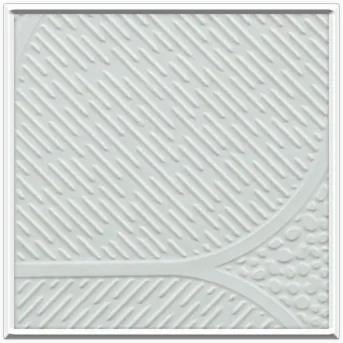Dec . 20, 2024 18:19 Back to list
mineral fibre ceiling
Understanding Mineral Fibre Ceilings Benefits, Applications, and Considerations
Mineral fibre ceilings have become an increasingly popular choice in both commercial and residential environments due to their numerous benefits, versatility, and aesthetic appeal. Made primarily from natural or synthetic minerals such as glass wool, rock wool, or cellulose, these ceiling tiles offer an effective solution for various acoustic, thermal, and fire safety requirements. This article delves into the key characteristics, advantages, applications, and considerations surrounding mineral fibre ceilings.
What are Mineral Fibre Ceilings?
Mineral fibre ceilings are ceiling tiles or panels designed for suspended (or drop) ceiling systems. They can be flat, textured, or patterned and are available in various sizes and thicknesses. The tiles are typically lightweight, making them easy to install and maintain. They can be painted or coated with a range of finishes to match interior design preferences.
The composition of mineral fibres comes from natural minerals or recycled materials, which not only contributes to their performance metrics but also aligns with sustainable building practices.
Key Benefits
1. Acoustic Performance One of the primary advantages of mineral fibre ceilings is their excellent sound-absorbing properties. These ceilings can reduce noise pollution, making them an ideal choice for environments such as offices, schools, and healthcare facilities where acoustics play a crucial role in comfort and productivity.
2. Thermal Insulation Mineral fibre materials provide exceptional thermal insulation, contributing to energy efficiency in buildings. By minimizing heat loss in winter and keeping buildings cool in summer, these ceilings can significantly reduce energy costs.
3. Fire Resistance Mineral fibre ceilings are usually non-combustible, providing an additional layer of fire safety. They can help slow the spread of flames and smoke, allowing for safer escape routes during emergencies. This makes them particularly suitable for commercial buildings where maintaining fire safety standards is critical.
4. Moisture Resistance Many mineral fibre ceiling products are designed to resist moisture and mold, making them suitable for use in humid environments such as kitchens, bathrooms, and basements. This feature not only contributes to the longevity of the material but also promotes healthier indoor air quality.
5. Ease of Installation and Maintenance Lightweight and generally easy to handle, mineral fibre tiles can be installed quickly, reducing labor costs. Furthermore, should a tile become damaged, it is often straightforward to replace a single tile without disrupting an entire system.
Applications
mineral fibre ceiling

Mineral fibre ceilings are widely used across various sectors. Typical applications include
- Commercial Spaces Offices, retail stores, and conference centers utilize mineral fibre ceilings to enhance acoustics, aesthetics, and thermal comfort
.- Educational Institutions Schools and universities benefit from mineral fibre ceilings that create conducive learning environments by managing sound levels.
- Healthcare Facilities Hospitals and clinics use these ceilings due to their fire safety and mold resistance, contributing to safer patient care environments.
- Residential Applications Homeowners are increasingly opting for mineral fibre ceilings in basements or other areas requiring effective sound and thermal management.
Considerations
While mineral fibre ceilings offer numerous advantages, there are some considerations to keep in mind
1. Durability While resistant to moisture, mineral fibre can be susceptible to damage from impact or heavy objects. Care should be taken during installation and use.
2. Aesthetic Options Although there is a range of styles available, some might find mineral fibre ceilings less visually appealing than alternative materials such as wood or metal.
3. Cost The price of mineral fibre ceilings can vary based on quality and performance characteristics, so it’s essential to balance cost with required properties.
Conclusion
In conclusion, mineral fibre ceilings present a multitude of advantageous features that make them suitable for diverse environments. Their acoustic performance, thermal insulation, fire resistance, and ease of installation have established them as popular choices for architects and builders. As sustainable construction practices gain traction, the demand for mineral fibre ceilings is likely to continue to rise. By considering both their benefits and potential drawbacks, stakeholders can make informed decisions that cater to the specific needs of their spaces. Whether you’re embarking on a new construction project or renovating an existing space, mineral fibre ceilings may just offer the perfect solution.
-
Quality Ceiling Trap Doors & Access Panels | Easy & Secure AccessNewsAug.30,2025
-
Durable Ceiling T Grid Systems | Easy InstallationNewsAug.29,2025
-
PVC Gypsum Ceiling: Durable, Laminated Tiles for Modern SpacesNewsAug.28,2025
-
Pvc Gypsum Ceiling Is DurableNewsAug.21,2025
-
Mineral Fiber Board Is DurableNewsAug.21,2025
-
Ceiling Tile Clip Reusable DesignNewsAug.21,2025







